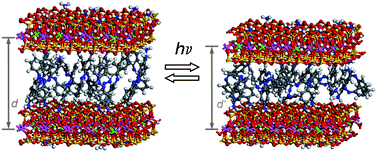The micro- to nano-sized nature of layered materials, particularly characteristic of naturally occurring clay minerals, limits our ability to fully interrogate their atomic dispositions and crystal structures. The low symmetry, multicomponent compositions, defects, and disorder phenomena of clays and related phases necessitate the use of molecular models and modern simulation methods. Computational chemistry tools based on classical force fields and quantum-chemical methods of electronic structure calculations provide a practical approach to evaluate structure and dynamics of the materials on an atomic scale. Combined with classical energy minimization, molecular dynamics, and Monte Carlo techniques, quantum methods provide accurate models of layered materials such as clay minerals, layered double hydroxides, and clay–polymer nanocomposites.
You have access to this article
 Please wait while we load your content...
Something went wrong. Try again?
Please wait while we load your content...
Something went wrong. Try again?


 Please wait while we load your content...
Please wait while we load your content...